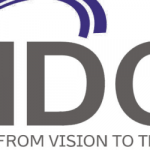Amazon Research Scientists Describe Fault-Tolerant Quantum Circuits with Much Lower Overhead
(AmazonScienceBlog) Amazon scientists Christopher Chamberland and Kyungjoo Noh recently published paper we published in the Nature journal npj Quantum Information, describing a new, low-overhead, fault-tolerant implementation of an important quantum gate called a T gate.
For many quantum computing architectures, the error correction for the logical T gate is responsible for most of the resource overhead. So reducing that overhead is an important outstanding problem in the field.
Quantum computation involves elementary operations known as quantum gates, which establish connections between quantum bits, or qubits, the quantum analogues of the bits in classical computers. Today’s qubits are still too noisy to faithfully execute the long quantum algorithms needed to solve practically important problems. Quantum error correction can compensate for noise, but it has high overhead. With existing quantum error correction schemes, a single logical qubit — the qubit that actually performs a quantum computation — might require thousands of additional physical qubits to handle the error correction.
We show that our scheme reduces the overhead costs of implementing T gates by at least an order of magnitude, both in terms of the number of qubits and the number of required operations. Further, their scheme respects many of the hardware constraints characteristic of the most promising quantum computing architectures.
Quantum gates can be divided into two groups: the Clifford group gates and the non-Clifford gates. Gates in the Clifford group can be efficiently simulated by a classical computer; non-Clifford gates cannot be. Of the three basic gates described above, only the T gate is a non-Clifford gate. Expressed in terms of our basic gate set, all useful quantum algorithms require many T gates.
Although large-scale and fully fault-tolerant quantum computers are not within the range of current technologies, various quantum computing architectures are inching towards the demonstration of a prototype fault-tolerant quantum error correction scheme. By removing the need to use very high-fidelity encoded Clifford operations and allowing the use of lower-fidelity physical-level operations — while respecting hardware constraints — our bottom-up magic-state-preparation scheme makes fault-tolerant implementation of a non-Clifford gate more easily realizable in the near future.























